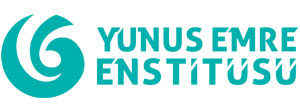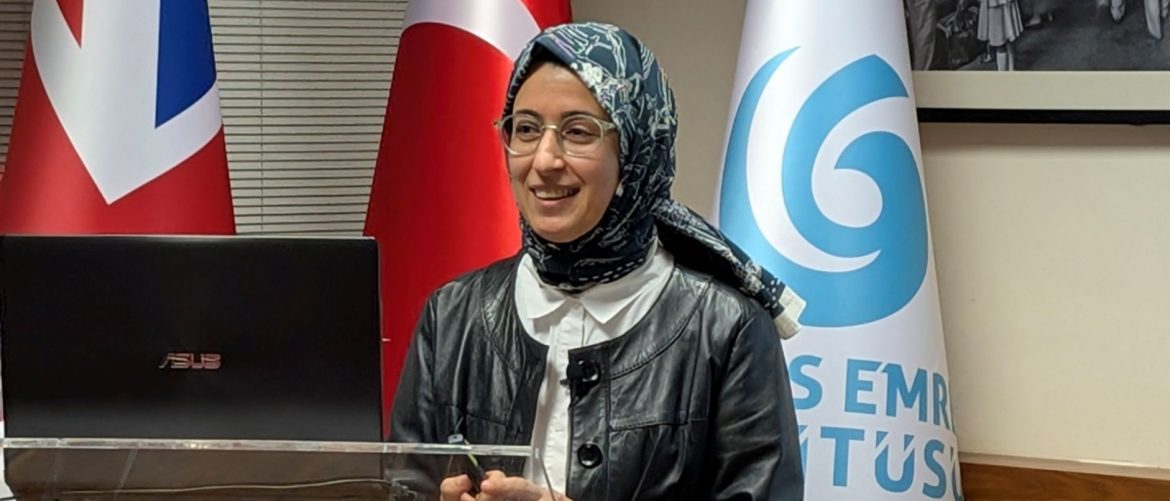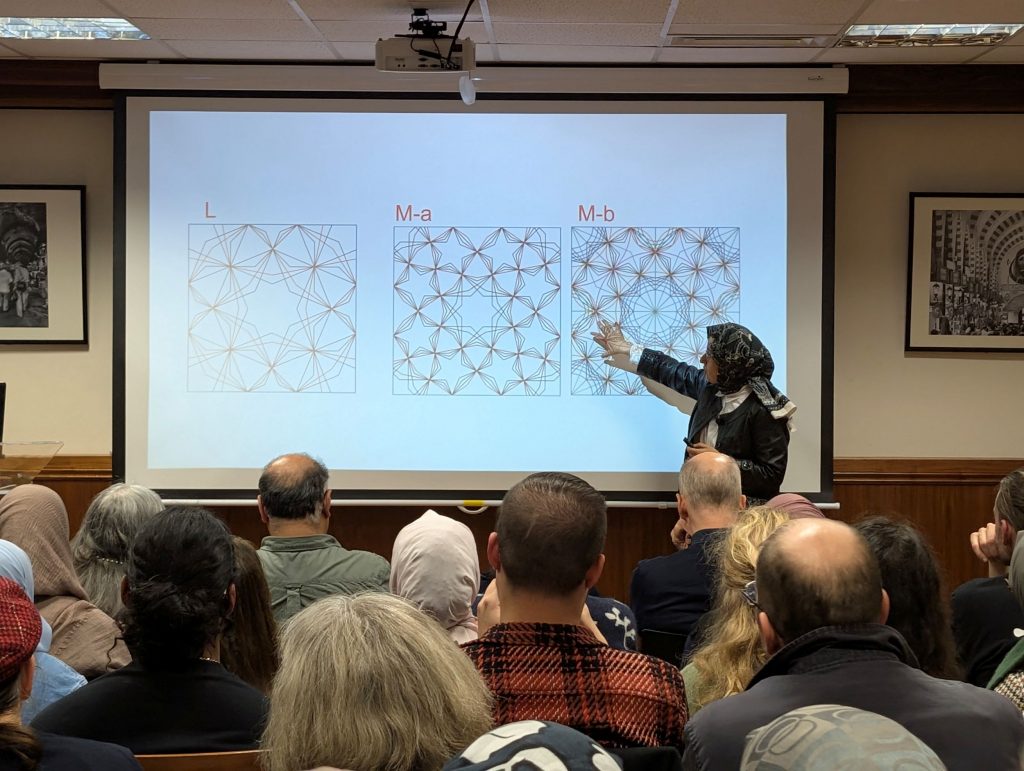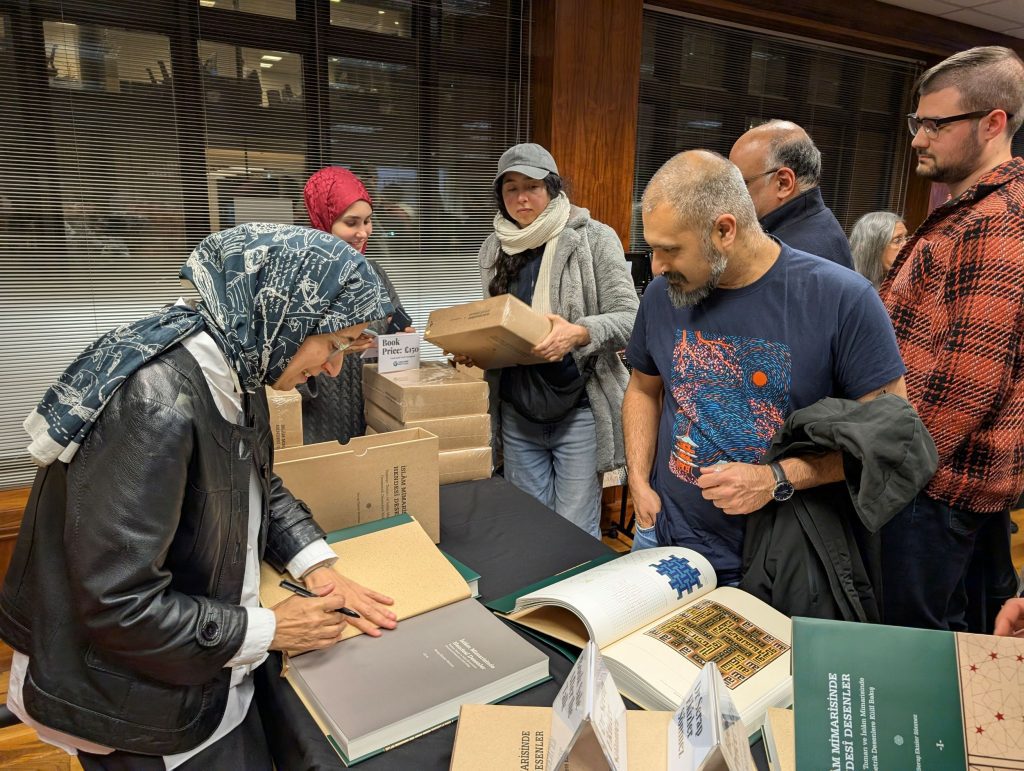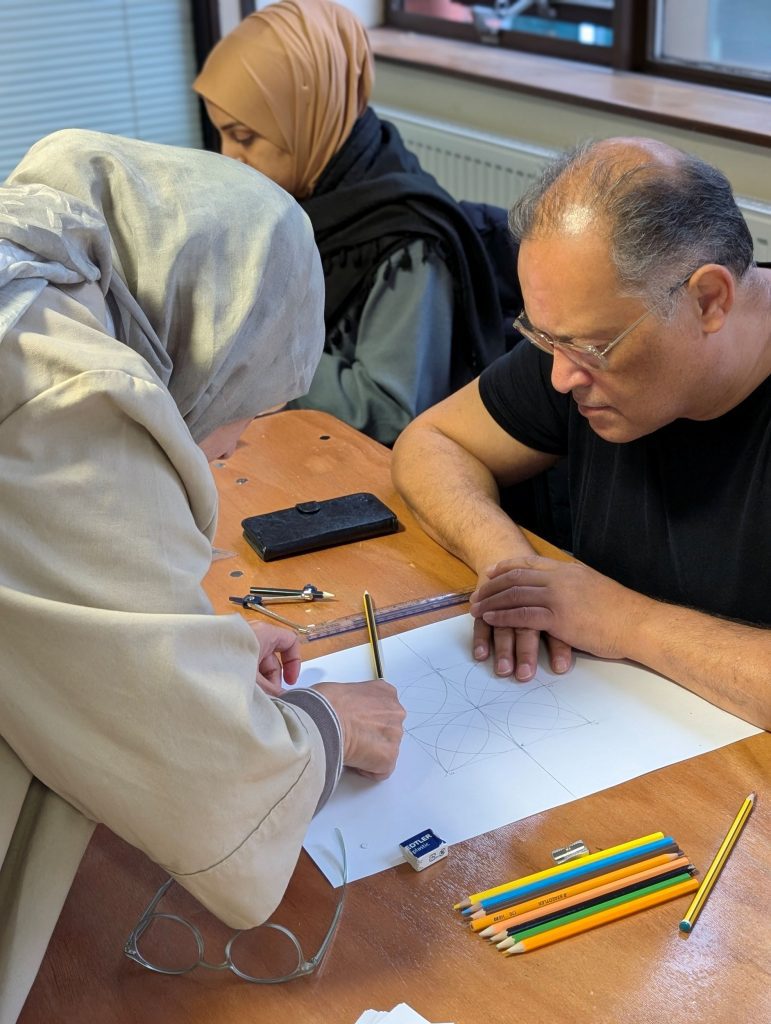Yunus Emre Enstitüsü – London proudly organised a series of highly successful events featuring Dr. Serap Ekizler Sönmez, one of the leading scholars in the field of Islamic geometric patterns. The events, held in both London and Dublin, garnered significant interest from a diverse audience.
On November 14, 2024, Dr. Sönmez delivered a lecture titled “Geometric Patterns in Islamic Architecture: Topkapı Scroll and Geometric Designs in Islamic Architecture,” where she explored the deep connection between geometric patterns and Islamic art, drawing insights from the themes in her latest book. Attendees had the unique opportunity to examine the historical significance of Islamic geometric structures, focusing on the 29.5-meter-long Topkapı Scroll housed at the Topkapı Palace in Istanbul.
On November 16, Dr. Sönmez hosted a workshop titled “A Hidden Pattern in the Sultanahmet Mosque” in London, offering participants a hands-on experience in recreating a specific geometric motif found in the Sultanahmet Mosque. Utilizing traditional tools and mathematical techniques, participants discovered the symbolic meanings behind these intricate designs while improving their technical skills. This workshop provided a deeper cultural understanding of Islamic geometric art.
Following her successful London events, Dr. Sönmez traveled to Dublin, where she presented a lecture on November 22, 2024, titled “Islamic Geometric Patterns: From Tradition to the Future” at Trinity College Dublin. In this lecture, Dr. Sönmez examined the historical evolution of Islamic geometric art and its modern-day implications, explaining how this ancient art continues to inspire and influence contemporary society. She also offered a profound exploration of the mathematical and spiritual dimensions of Islamic art, further enriching participants’ knowledge.
These events gave attendees the opportunity to explore both the theoretical and practical aspects of Islamic geometric patterns. Combining art, science, and spirituality, the activities in both cities provided a rich and immersive experience. Participants not only learned how these patterns have shaped both historical and modern architecture but also how they transcend cultural and geographical boundaries to inspire artists, architects, and scholars around the world.
Dr. Sönmez received high praise from participants, who appreciated not only the opportunity to explore the mathematical intricacies and symbolism of Islamic art but also the importance of preserving this cultural heritage, as emphasized throughout her sessions.
